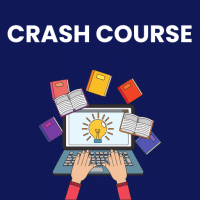B.Ed Entrance Exam > B.Ed Entrance Questions > A learner who learns best through tactile exp...
Start Learning for Free
A learner who learns best through tactile experiences and physical activity is known as a:
- a)Visual Learner
- b)Auditory Learner
- c)Kinesthetic Learner
- d)Logical Learner
Correct answer is option 'C'. Can you explain this answer?
Verified Answer
A learner who learns best through tactile experiences and physical act...
Kinesthetic learners prefer hands-on experiences and learning through physical activity.
They benefit from activities that involve movement and touch to understand and remember information.
View all questions of this test
They benefit from activities that involve movement and touch to understand and remember information.
Most Upvoted Answer
A learner who learns best through tactile experiences and physical act...
Kinesthetic Learner:
Kinesthetic learners are individuals who learn best through physical activities and hands-on experiences. They prefer to actively engage with the material rather than passively listen or observe.
Characteristics of Kinesthetic Learners:
- Kinesthetic learners often have good coordination and motor skills.
- They may struggle to sit still for long periods of time and prefer to move around while learning.
- These learners excel in activities such as sports, dance, or other physical tasks.
- They may have difficulty following lectures or reading long passages without some form of physical engagement.
Strategies for Kinesthetic Learners:
- Incorporate movement into learning activities, such as role-playing, simulations, or hands-on experiments.
- Use manipulatives or physical objects to help reinforce concepts.
- Encourage physical activity breaks during study sessions to help maintain focus.
- Engage in group activities or projects that involve physical movement.
Importance of Understanding Learning Styles:
- Recognizing and catering to different learning styles, such as kinesthetic learning, can help educators create more inclusive and effective teaching strategies.
- By accommodating kinesthetic learners' preferences for physical activity and hands-on experiences, educators can help these individuals reach their full potential and enhance their learning outcomes.
Kinesthetic learners are individuals who learn best through physical activities and hands-on experiences. They prefer to actively engage with the material rather than passively listen or observe.
Characteristics of Kinesthetic Learners:
- Kinesthetic learners often have good coordination and motor skills.
- They may struggle to sit still for long periods of time and prefer to move around while learning.
- These learners excel in activities such as sports, dance, or other physical tasks.
- They may have difficulty following lectures or reading long passages without some form of physical engagement.
Strategies for Kinesthetic Learners:
- Incorporate movement into learning activities, such as role-playing, simulations, or hands-on experiments.
- Use manipulatives or physical objects to help reinforce concepts.
- Encourage physical activity breaks during study sessions to help maintain focus.
- Engage in group activities or projects that involve physical movement.
Importance of Understanding Learning Styles:
- Recognizing and catering to different learning styles, such as kinesthetic learning, can help educators create more inclusive and effective teaching strategies.
- By accommodating kinesthetic learners' preferences for physical activity and hands-on experiences, educators can help these individuals reach their full potential and enhance their learning outcomes.

|
Explore Courses for B.Ed Entrance exam
|

|
Question Description
A learner who learns best through tactile experiences and physical activity is known as a:a)Visual Learnerb)Auditory Learnerc)Kinesthetic Learnerd)Logical LearnerCorrect answer is option 'C'. Can you explain this answer? for B.Ed Entrance 2025 is part of B.Ed Entrance preparation. The Question and answers have been prepared according to the B.Ed Entrance exam syllabus. Information about A learner who learns best through tactile experiences and physical activity is known as a:a)Visual Learnerb)Auditory Learnerc)Kinesthetic Learnerd)Logical LearnerCorrect answer is option 'C'. Can you explain this answer? covers all topics & solutions for B.Ed Entrance 2025 Exam. Find important definitions, questions, meanings, examples, exercises and tests below for A learner who learns best through tactile experiences and physical activity is known as a:a)Visual Learnerb)Auditory Learnerc)Kinesthetic Learnerd)Logical LearnerCorrect answer is option 'C'. Can you explain this answer?.
A learner who learns best through tactile experiences and physical activity is known as a:a)Visual Learnerb)Auditory Learnerc)Kinesthetic Learnerd)Logical LearnerCorrect answer is option 'C'. Can you explain this answer? for B.Ed Entrance 2025 is part of B.Ed Entrance preparation. The Question and answers have been prepared according to the B.Ed Entrance exam syllabus. Information about A learner who learns best through tactile experiences and physical activity is known as a:a)Visual Learnerb)Auditory Learnerc)Kinesthetic Learnerd)Logical LearnerCorrect answer is option 'C'. Can you explain this answer? covers all topics & solutions for B.Ed Entrance 2025 Exam. Find important definitions, questions, meanings, examples, exercises and tests below for A learner who learns best through tactile experiences and physical activity is known as a:a)Visual Learnerb)Auditory Learnerc)Kinesthetic Learnerd)Logical LearnerCorrect answer is option 'C'. Can you explain this answer?.
Solutions for A learner who learns best through tactile experiences and physical activity is known as a:a)Visual Learnerb)Auditory Learnerc)Kinesthetic Learnerd)Logical LearnerCorrect answer is option 'C'. Can you explain this answer? in English & in Hindi are available as part of our courses for B.Ed Entrance.
Download more important topics, notes, lectures and mock test series for B.Ed Entrance Exam by signing up for free.
Here you can find the meaning of A learner who learns best through tactile experiences and physical activity is known as a:a)Visual Learnerb)Auditory Learnerc)Kinesthetic Learnerd)Logical LearnerCorrect answer is option 'C'. Can you explain this answer? defined & explained in the simplest way possible. Besides giving the explanation of
A learner who learns best through tactile experiences and physical activity is known as a:a)Visual Learnerb)Auditory Learnerc)Kinesthetic Learnerd)Logical LearnerCorrect answer is option 'C'. Can you explain this answer?, a detailed solution for A learner who learns best through tactile experiences and physical activity is known as a:a)Visual Learnerb)Auditory Learnerc)Kinesthetic Learnerd)Logical LearnerCorrect answer is option 'C'. Can you explain this answer? has been provided alongside types of A learner who learns best through tactile experiences and physical activity is known as a:a)Visual Learnerb)Auditory Learnerc)Kinesthetic Learnerd)Logical LearnerCorrect answer is option 'C'. Can you explain this answer? theory, EduRev gives you an
ample number of questions to practice A learner who learns best through tactile experiences and physical activity is known as a:a)Visual Learnerb)Auditory Learnerc)Kinesthetic Learnerd)Logical LearnerCorrect answer is option 'C'. Can you explain this answer? tests, examples and also practice B.Ed Entrance tests.

|
Explore Courses for B.Ed Entrance exam
|

|
Signup for Free!
Signup to see your scores go up within 7 days! Learn & Practice with 1000+ FREE Notes, Videos & Tests.


















